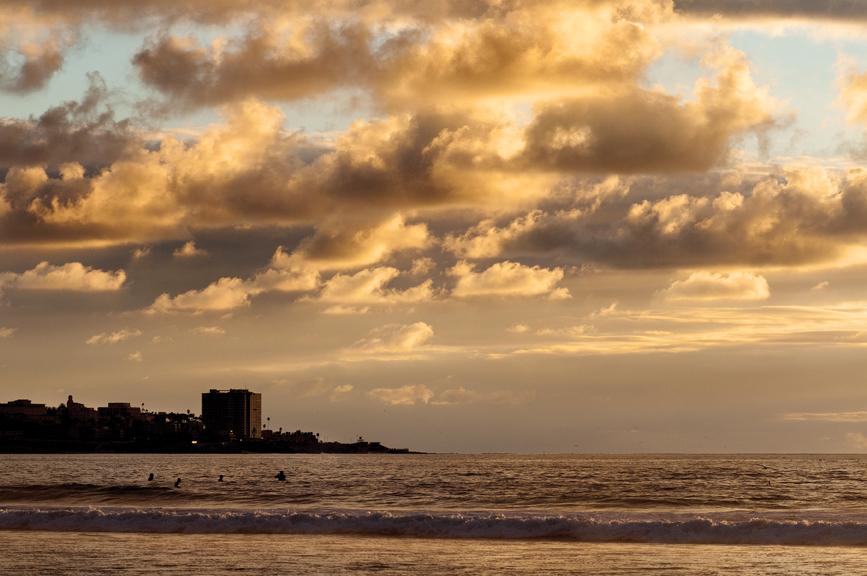Two San Diego State researchers have completed the second year of a four-year program of searching for underwater archaeological sites along the West Coast.
SDSU archaeologist Todd Braje and geology assistant professor Jillian Maloney want to find out when and how people arrived in the Americas.
“It’s not definitive when people first got here and how they first got here,” Braje said. “We think we know, but the major challenge is those sites are probably underwater. They have never been found.”
During the summer of 2017, they were able to identify four locations along the northern Channel Islands off the coast of Santa Barbara and another four spots along the central Oregon coast that they are going to test.
“These four spots have interesting geologic features, potential archaeology and they’re all a little bit different because we don’t want to go to the same kinds of features,” Braje said. “They’ll all teach us something. So now, to me, this is probably the most exciting time of the project. We’re about to go out and figure out what’s really down there.”
Braje said their next field work will begin next month.
“Our next step starting in February is to take a boat out with massive coring equipment, we drop a core on the ocean floor and it vibrates down and collects a 3-to-6-inch diameter soil core,” Braje said. “It’s just like you would do on land.”
The researchers hope to use their findings to get more funding and use a predictive model to search for archaeological sites.
“So while this ends in two years, we’re hoping to continue in projects and research, either funded by the same agency or funded by new agencies,” Braje said.
The current research is funded by the Bureau of Ocean Energy Management, he said.
Braje initially asked Maloney to take part in the project because of her experience in marine geology.
Maloney said her background is in using a variety of tools to better understand geological landscapes underwater.
“So that’s where we work really well together — because I can help find those landscapes and landforms that we’re looking for and he knows all the background and why we should be looking for those landforms in the first place,” Maloney said.
It’s an innovative project, she said.
“The fact that we have marine geologists, archaeologists and we have people who specialize in modeling, that’s a new thing for this type of work, instead of just sending out archaeologists to look at something and miss potential clues from the geology or sending out geologists and missing clues for the archaeology,” Maloney said.
She said she has various SDSU undergraduate and graduate students working on the data for the project.
“People have been coming out on some of the cruises, and they also work on the data when we get it back here, so they process the data and they interpret it,” Maloney said.
Among these students is Howasta Tahiry, an SDSU geology graduate student.
“Once she accepted me as a student, she had funding for me to come over summer just to work with her,” Tahiry said. “We did seismic work up in Oregon. We were just mapping the seafloor trying to see any river channels, something from the people of the ancient migration route.”
Braje said SDSU students can benefit from the project in a number of ways.
“My undergraduate and graduate students have a chance to be involved in what I do,” she said. “They get involved in helping analyze materials, working in the lab, doing all sorts of the nuts and bolts of the most cutting edge and high profile research that’s happening along the west coast of North America.”
“It’s groundbreaking work,” Tahiry said.
Braje is optimistic about what they’ll find — but he has to be realistic, too.
“Perhaps we will win the lottery and hit that needle in a haystack and we will actually find an archeological site, but I think that goal is still down the road,” Braje said. “It’s not going to stop with this project but this is going to be years-to-decades-long efforts to find these sites.”







